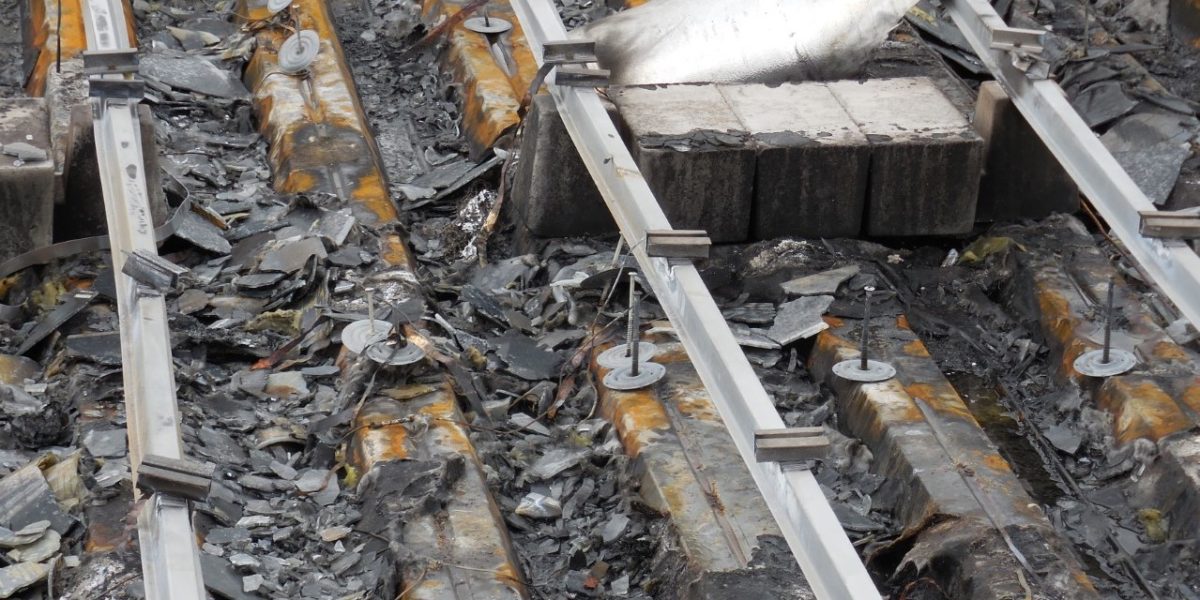PV system fires have a tendency to strike a nerve within the industry. While rare compared to other system disaster events, such occurrences always garner considerable attention, and no installer or manufacturer wants to have their handiwork or hardware at the center of such a disaster.
The issue with solar system fires is how little is known about them. Questions have lingered for years as to what the common causes are, where system failures are occurring, and how often these failures could happen. These questions are the same ones being pursued by Dr. John R. Balfour, president of High Performance PV, and Lawrence Shaw, chief solar systems engineer at Higher Powered, LLC.

To Balfour and Shaw, the most clear and pressing issue with preventing PV system fires is how little data is kept on them. All reported fires in the country are tracked by the U.S. Fire Administration (USFA) using data given by local fire departments. However, when a solar system is determined to be the cause of a fire, that’s as deep as the reporting goes, with no exploration into specific failure or causation. Furthermore, if a responding fire department doesn’t have solar photovoltaics listed as an option in their reporting system, it gets filed to USFA miscellaneously.
The USFA also releases its fire data some time after it has been collected, with the most current data on file at this minute being from 2019.
As it stands, solar system fires are underreported (sometimes not at all), available data is dated, and specific causations remain a mystery.
While publicizing system fires, faulty hardware, components aging poorly, and improper installation can be seen as a poor reflection on the industry at large, Balfour says that this is an inconvenience that must be hurdled in order to address a larger industry issue.
“Almost all of these issues are quite controllable,” said Balfour. “And that control goes back to having accurate shared information, i.e. component and system data.”

Over the course of their work, Balfour and Shaw came across a case study in Japan and Britain of a hundred solar system fires. Of these fires, the majority of them were caused by aging and failing system components, and a significant number of failures were attributed to components greater than or equal to seven years of age.
Aging system components frequently being the cause of fires may come as a surprise, as blame is often attributed to improper installation in the general discourse of PV system fires. However, one small case study is not enough to rule installation issues out as a contributing factor either. It also must be considered that not all components that fail are old and that some components could be faulty from day one.
However, many companies and owners of projects that have caught fire, according to Balfour, don’t want to share that information because of the negative reflection. This attitude, however, creates a circular issue: if fires are treated like a taboo issue that should be moved on from as soon as possible, the proper installation, operations and maintenance, and training procedures can’t be put into place to identify failure causes, so we remain at the same point of not knowing what causes solar system fires, nor how to prevent them.
The two believe that the catalyst for more in-depth and informative data tracking will come from financiers and insurers of solar projects. If solar system fires become more frequent and/or destructive, they’ll become a legitimate industry-wide concern for project economics and reliability. Financiers won’t want to approach projects without some level of certainty that the proper precautions are being taken, and insurers may not provide coverage to projects that aren’t implementing preventative O&M and other precautions. This is similar to what’s happening with solar projects in hail-prone regions, where research into hail damage mitigation and monitoring was sparked by the insurance industry.
To try to put a number on what these losses could look like, Shaw has developed a methodology to estimate the future costs and impacts from reported PV system sourced fires in California. By estimating the number of PV systems in the state that are older than seven years (in-line with the Japanese case study) and using available data to track the number of fires in California annually, Shaw’s model is able to generally predict the amount of PV fires that will occur in California and what their cost will be, both monetary and in terms of physical harm if current industry practices persist.
***
Some of the details included in this article have been developed for a book titled, ““Photovoltaic (PV ) System Delivery as Reliable Energy Infrastructure”, under contract with John Wiley & Sons. The book will be available early 2022.
This content is protected by copyright and may not be reused. If you want to cooperate with us and would like to reuse some of our content, please contact: editors@pv-magazine.com.









Most heat related fires are from poor electrical contact on push in MC4 connectors that have corroded or are loose after years of metal expansion and contraction on hot surfaces. Also when copper wires transitions to steel or aluminum connectors heat can build up hot enough to melt insolation and plastic covering. The best connections are pure copper wire, terminating on copper eye ring connectors under compression screws that can be parodically tightened at ground level. Soldered copper splices with silver solder and with rubber sealant coating, like “Scotch Coat” have lasted 50 or more years in the field.